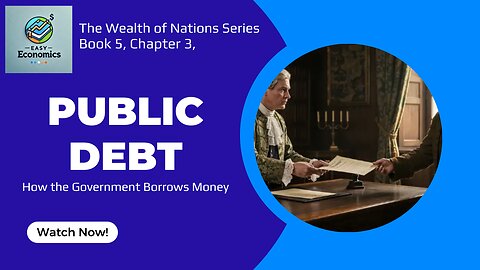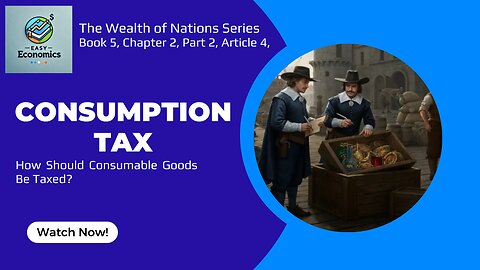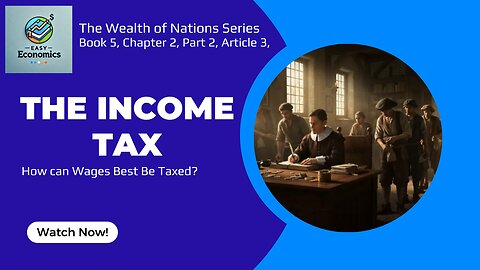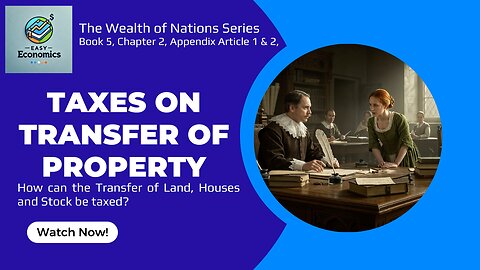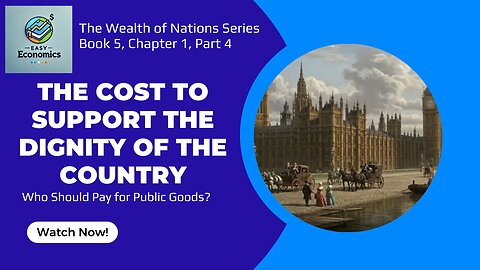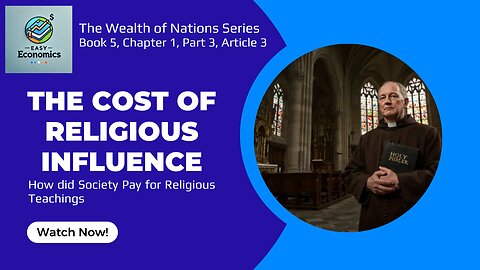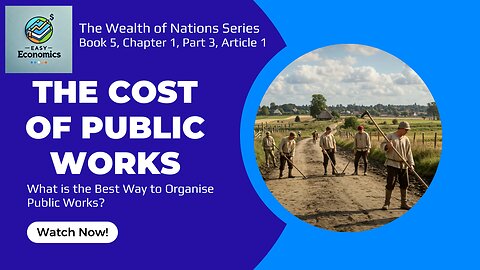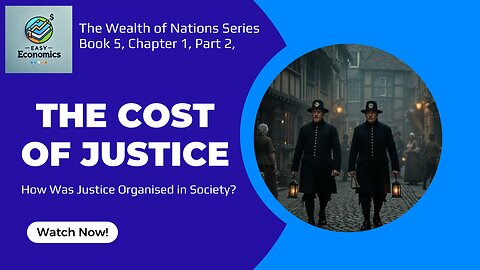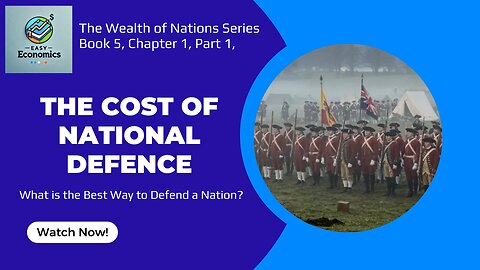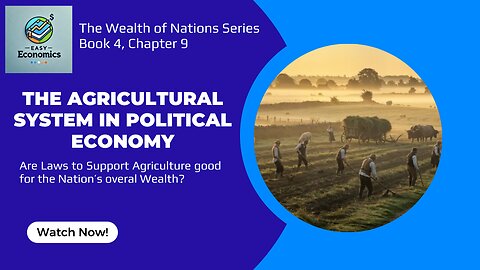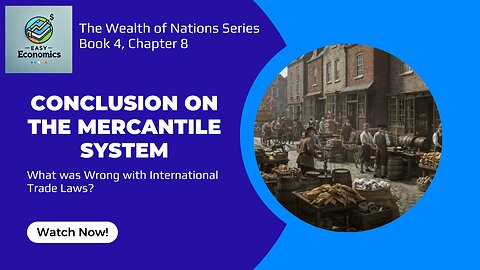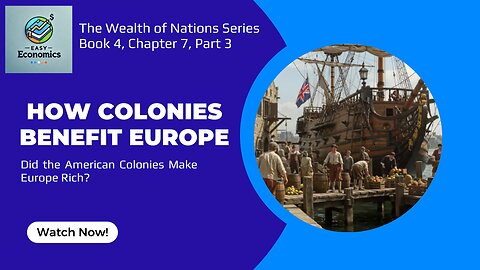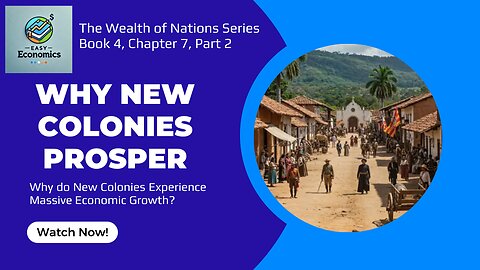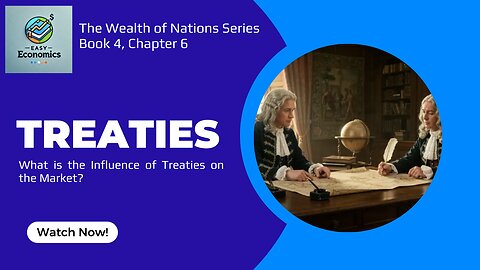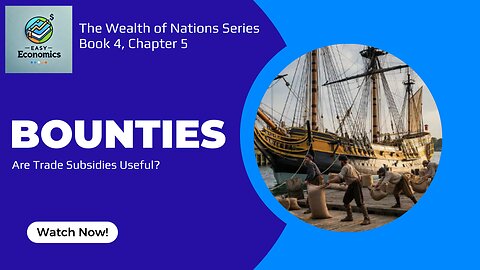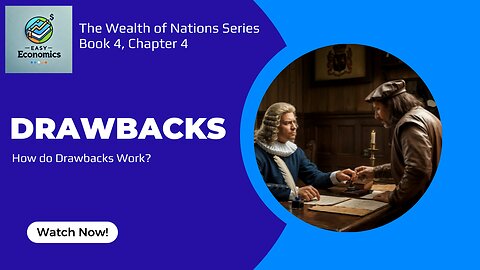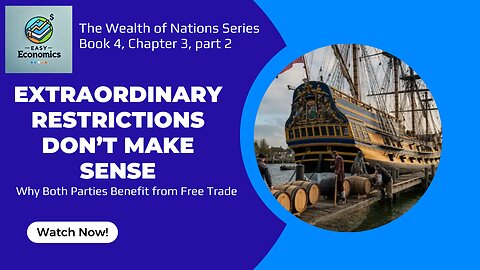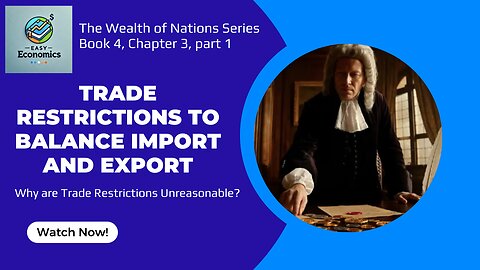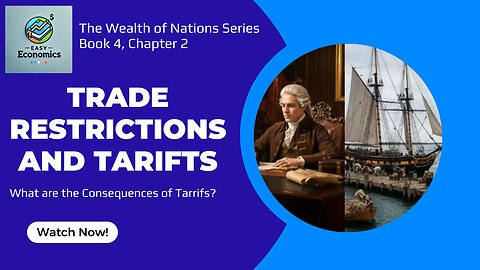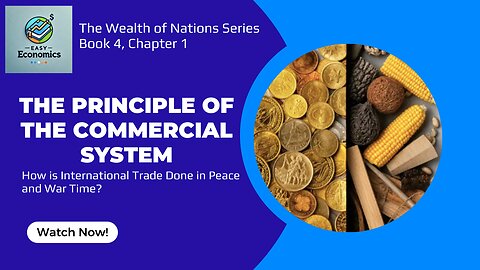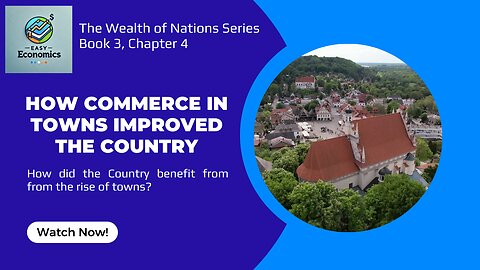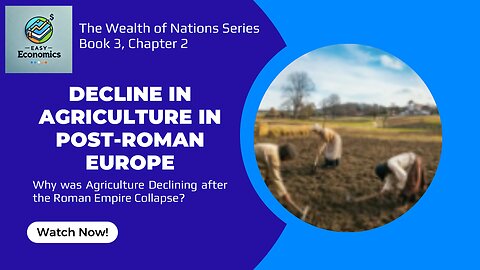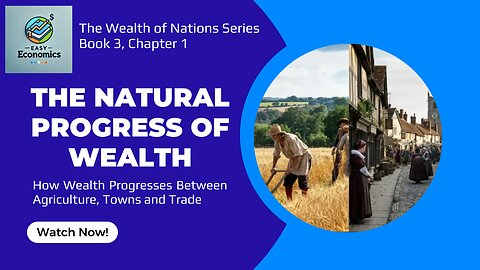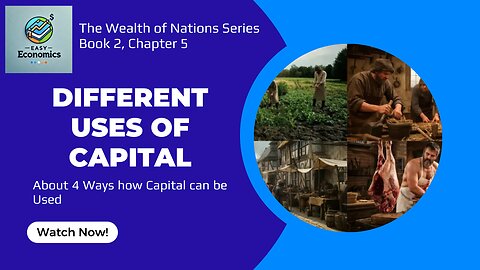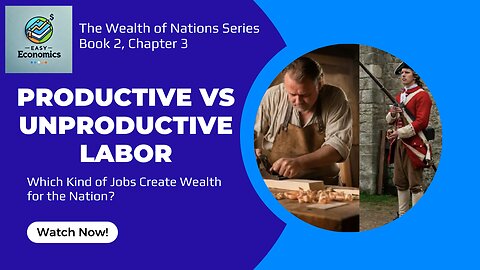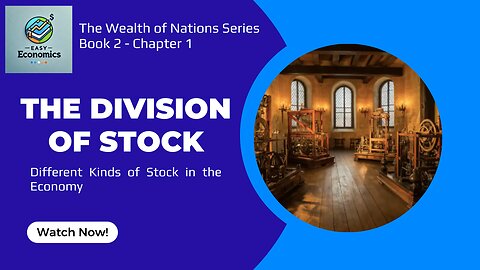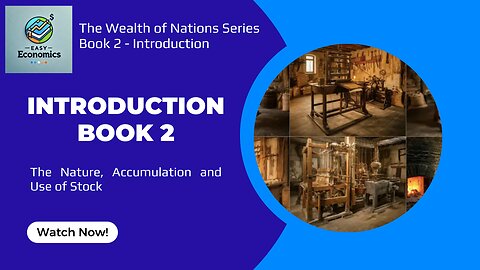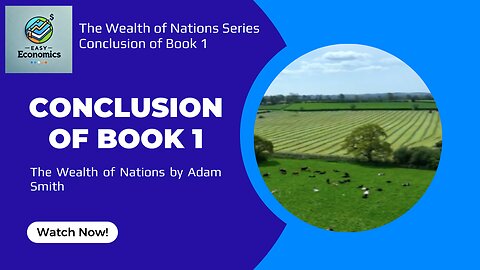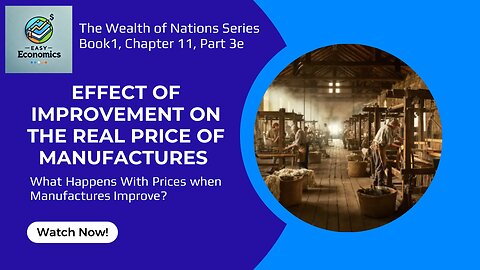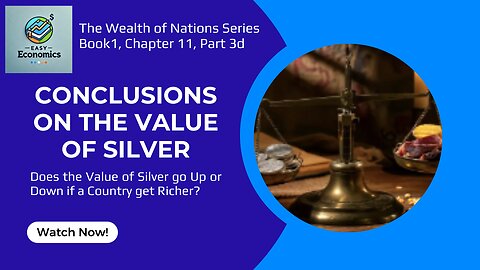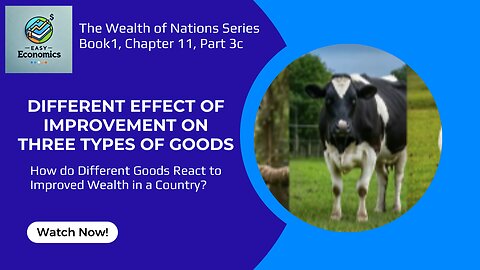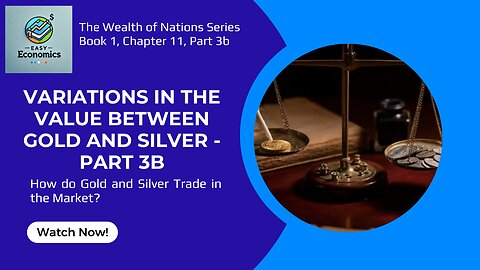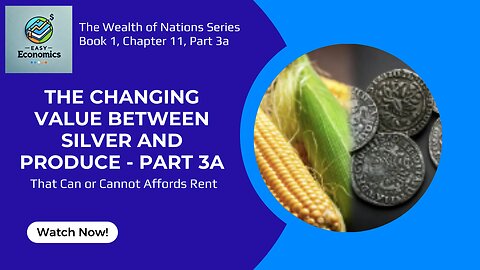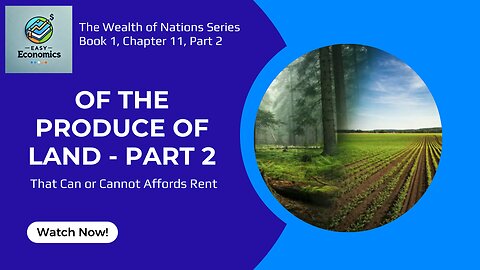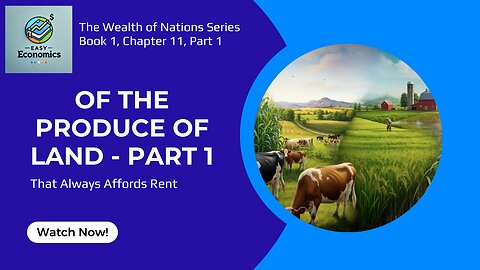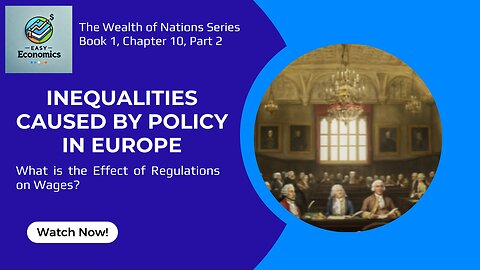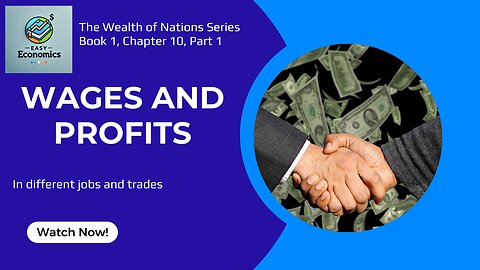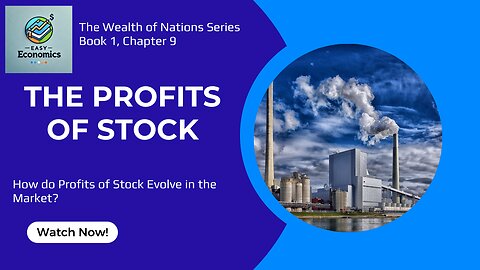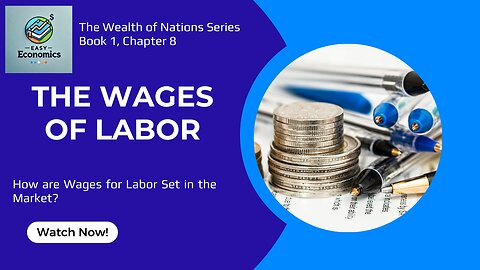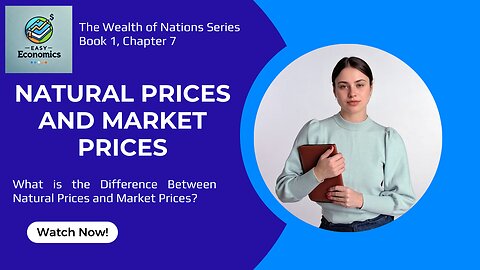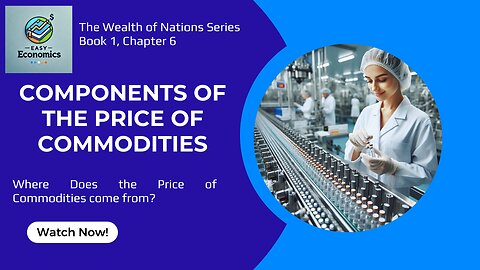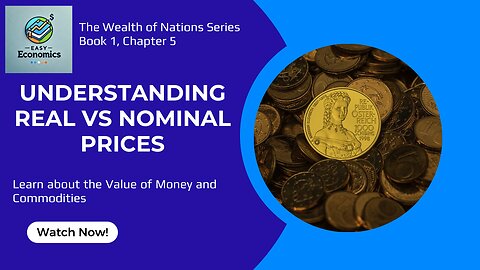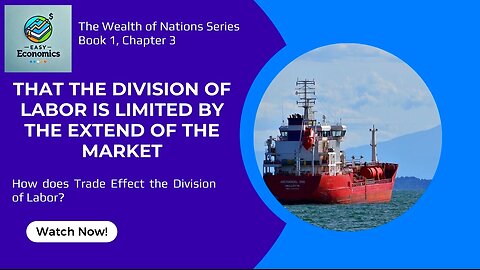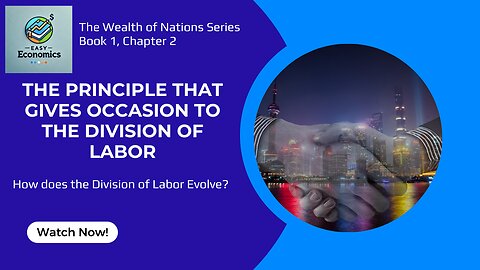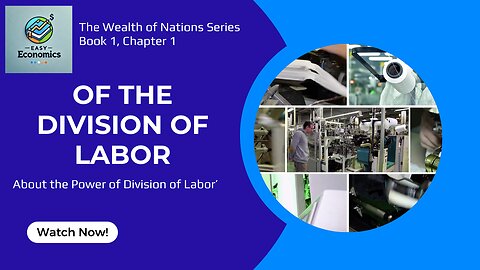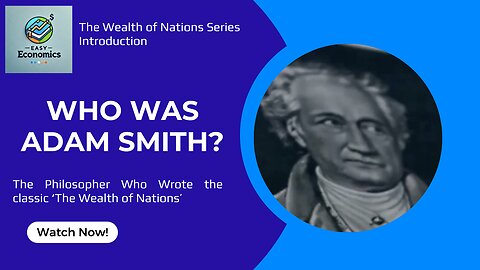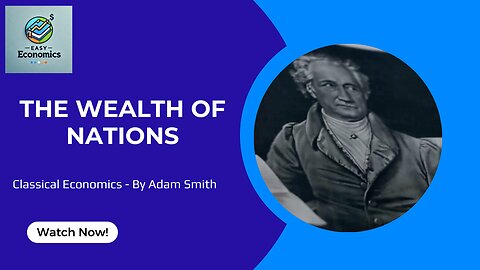Premium Only Content
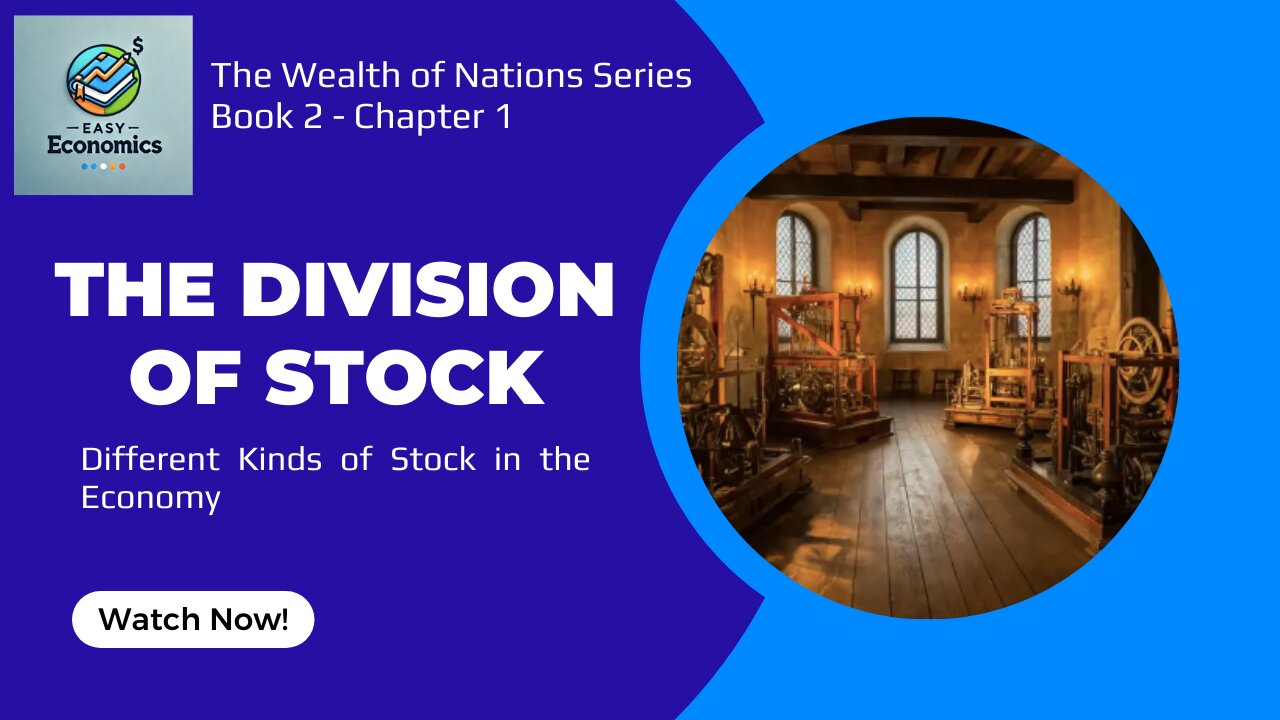
The Wealth of Nations Book 5 Chapter 1 - Public Debt
The Wealth of Nations Book 5 Chapter 2 Part 2 Article 4 - Taxes on Consumable Goods
The Wealth of Nations Book 5 Chapter 2 Part 2 Article 3 - Taxes on Wages
The Wealth of Nations Book Chapter 2 Appendix Article 1 & 2 - Taxes on Property Transfers
The Wealth of Nations Book 5 Chapter 2 Part 2 Article 2 - Taxes on Profits of Stock
The Wealth of Nations Book 5 Chapter 2 Part 2 Article 1 - Taxes on the Rent of Land
The Wealth of Nations Book 5 Chapter 2 Part 1 - Exploring Public Revenue Sources
The Wealth of Nations Book 5 Chapter 1 Part 4 - Who Should Pay for Public Cost?
The Wealth of Nations Book 5 Chapter 1 Part 3 Article 3 - The Cost of Religious Influence
The Wealth of Nations Book 5 Chapter 1 Part 3 Article 2 - The Real Cost of Education
The Wealth of Nations Book 5 Chapter 1 Part 3 Article 1 - The Expense of Public Works
The Wealth of Nations Book 5 Chapter 1 Part 2 - The Cost of Justice
The Wealth of Nations Book 5 Chapter 1 Part 1 - The Cost of National Defence
The Wealth of Nations Book 4 Chapter 9 - Systems in Political Economy
The Wealth of Nations Book 4 Chapter 8 - The Mercantile System's Hidden Flaws
The Wealth of Nations Book 4 Chapter 7 Part 3 - How Europe Benefits from American Colonies
The Wealth of Nations Book 4 Chapter 7 Part 2 - Why New Colonies Prosper
The Wealth of Nations Book 4 Chapter 7 Part 1 - The Motives for Establishing New Colonies
The Wealth of Nations Book 4 Chapter 6 - The Hidden Cost of Trade Treaties
The Wealth of Nations Book 4 Chapter 5 - Bounties, The Hidden Cost of Subsidies
The Wealth of Nations Book 4 Chapter 4 - Understanding Drawbacks in International Trade
The Wealth of Nations Book 4 Chapter 3 Part 2 - Why Extraordinary Restrictions Don't Make Sense
The Wealth of Nations Book 4 Chapter 3 Part 1 - The Unreasonableness of Import Restrictions
The Wealth of Nations Book 4 Chapter 2 - Restrictions on Goods that can be Produced at Home
The Wealth of Nations Book 4 Chapter 1 - The Principle of Commerce and Mercantile Systems
The Wealth of Nations Book 3 Chapter 4 - How Commerce in Towns Improved the Country
The Wealth of Nations Book 3 Chapter 3 - The Rise of Cities After Rome's Fall
The Wealth of Nations Book 3 Chapter 2 - The Decline of Agriculture in Post-Roman Europe
The Wealth of Nations Book 3 Chapter 1 - The Natural Progress of Wealth Explained
The Wealth of Nations Book 2 Chapter 5 - The Different Uses of Capital
The Wealth of Nations Book 2 Chapter 4 - Understanding Stock Lend at Interest
The Wealth of Nations Book 2 Chapter 3 - Understanding Productive and Unproductive Labour
The Wealth of Nations Book 2 Chapter 2 - Money as Part of Society's Wealth
The Wealth of Nations Book 2 Chapter 1 - The Division of Stock
The Wealth of Nations - Introduction Book 2 - Nature Accumulation and Use of Stock
The Wealth of Nations - Conclusion of Book 1
The Wealth of Nations Book 1 Chapter 11 part 3e - Effect of Improvement on the Price of Manufactures
The Wealth of Nations Book1 Chapter 11 Part 3d - Conclusion on the Value of Silver
The Wealth of Nations Book 1 Chapter 11 Part 3c - Different Effects on Improvement of Three Goods
The Wealth of Nations Book 1 Chapter 11 Part 3b - Variations in the Value of Gold and Silver
The Wealth of Nations Book 1 Chapter 11 Part 3a - The Change Between Value of the Produce and Silver
The Wealth of Nations Book 1 Chapter 11 Part 2 - Of The Produce of Land
The Wealth of Nations Book 1 Chapter 11 Part 1 - Of the Rent of Land
The Wealth of Nations Book 1 Chapter 10 Part 2 - Inequality Created by Europe's Policies
The Wealth of Nations Chapter 10 Book 1 Part 1 - Wages and Profits in Different Jobs
The Wealth of Nations Chapter 9 book 1 - Of the Profits of Stock
The Wealth of Nations Chapter 8 Book 1 - The Wages of Labor
The Wealth of Nations Chapter 7 Book 1 - Understanding Natural Prices and Market Prices
The Wealth of Nations Chapter 6 Book 1 - Components of the Price of Commodities
The Wealth of Nations Chapter 5 Book 1 - Understanding Real VS Nominal Prices
The Wealth of Nations Chapter 4 Book 1 - The Origin and the Use of Money
The Wealth of Nations Chapter 3 Book 1 - The Division of Labor, Market Size Matters
The Wealth of Nations Chapter 2 Book 1 - The Principle Which Gives Occasion to the Division of Labor
The Wealth of Nations Chapter 1 Book 1 - The Power of Division of Labor
The Wealth of Nations - Introduction and Overview
Adam Smith - The Philosopher Who Changed How We See The World
The Wealth of Nations - A Timeless Guide to Prosperity
The Wealth of Nations Book 2 Chapter 1 - The Division of Stock
Are you interested to read the original book? Get ‘The Wealth of Nations’ by Adam Smith now: https://amzn.to/3W5xeku
In this video, we dive into the first chapter of The Division of Stock, exploring how people manage and invest their resources differently depending on the size of their stock. For individuals with limited stock, income is tied only to their labor. But once someone accumulates enough stock for long-term survival, they divide it into two categories: capital and stock for immediate consumption. Capital can be further split into circulating and fixed capital. Circulating capital is used for buying and selling goods to generate profit, while fixed capital includes investments like machinery and land improvements that generate long-term revenue. We explore how industries like farming, manufacturing, and trade rely on different balances of these capital types, and how they contribute to national wealth. Understanding these divisions is key to grasping how economies grow and how individuals and nations create sustainable wealth.
00:00 - Introduction to the Division of Stock
00:11 - Short-term vs Long-term Stock
00:58 - Types of Capital
01:32 - Industry-specific Capital Needs
02:01 - Farmers and Capital
02:24 - General Stock of a Country
02:47 - Fixed and Circulating Capital
03:16 - Supporting Immediate Consumption
03:52 - Continuous Supply of Circulating Capital
04:21 - Investment in Stable vs Unstable Regions
04:42 - Conclusion
-
 LIVE
LIVE
GritsGG
4 hours agoWin Streaking! Most Wins 3180+! 🔥
331 watching -
 LIVE
LIVE
LumpyPotatoX2
9 hours agoKilling Floor 3 + SoulFrame: Co-op Showcase - #RumbleGaming
650 watching -
 2:10:50
2:10:50
vivafrei
9 hours agoEp. 274: Canada's War on Christianity! Is Candace Owens Cooked? SCOTUS, RFK Jr. AND MORE!
94.5K218 -
 38:09
38:09
The Mel K Show
7 hours agoMel K & Tim James | Are Hidden Dangers Lurking in Your Mouth? | 7-27-25
41.2K7 -
 3:38:01
3:38:01
sophiesnazz
3 hours agoTIME TO WIND PEOPLE UP !socials
13.1K1 -

GamerGril
4 hours agoDoom Gal Bingo The Finale | Special Boss Bingo
10.5K5 -
 2:22:46
2:22:46
The Connect: With Johnny Mitchell
1 day ago $16.52 earnedOne Man's Mission To Stop Human Trafficking: How A Billionaire Mercenary Saved Hundreds Of Children
67.8K41 -
 5:16:39
5:16:39
FoeDubb
4 hours ago🏰KINGDOM MENU:🌳SESHYS & 🎮WITCHER 3 VIBES ON DECK DILLY DILLY!!!
9.2K2 -
 28:43
28:43
Liberty Hangout
4 days agoAnti-Trumpers Don't Know What They're Protesting
64.7K252 -
 LIVE
LIVE
PudgeTV
1 day ago🟠 Gaming on Rumble | Soulframe Early Access Gaming Showcase
103 watching
